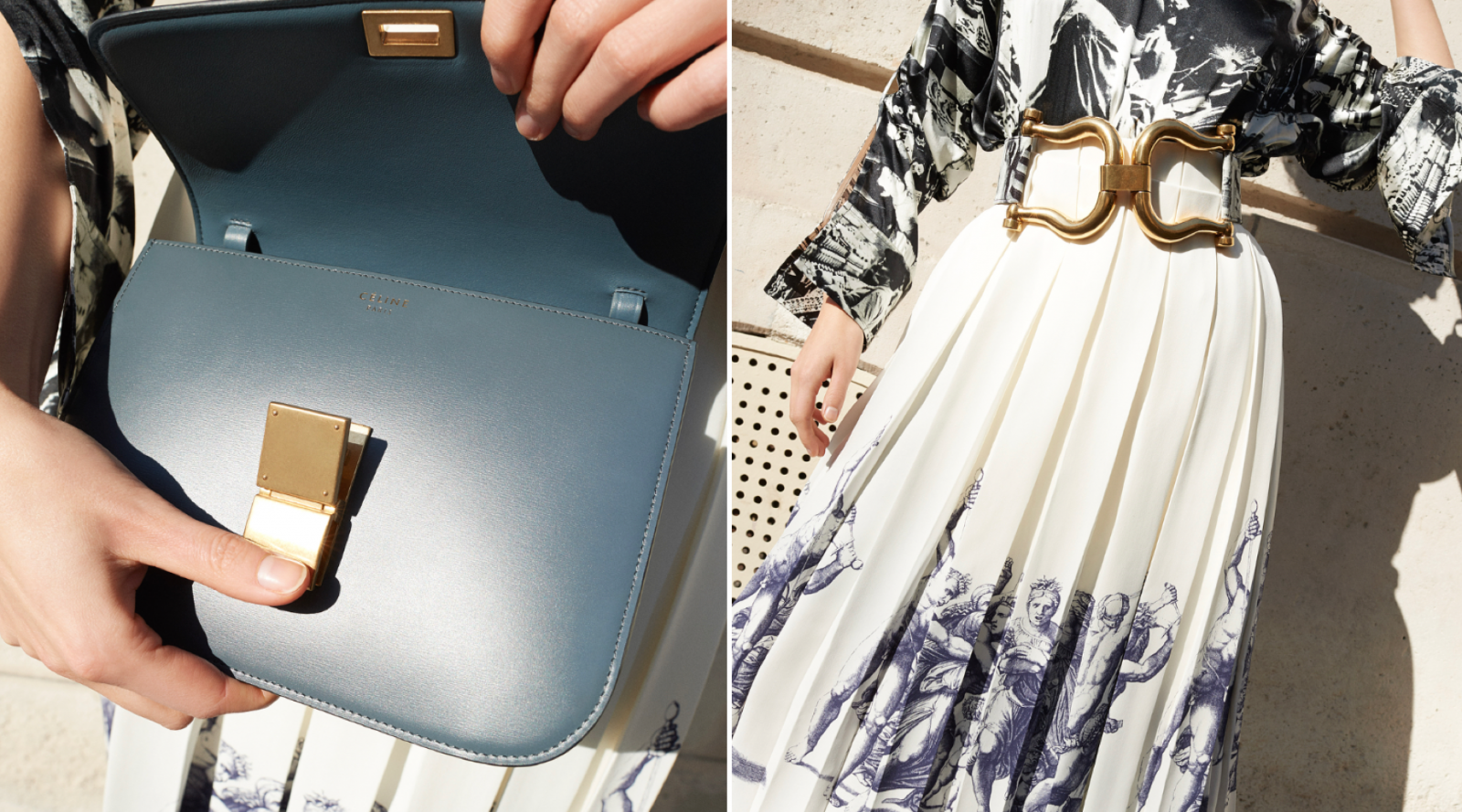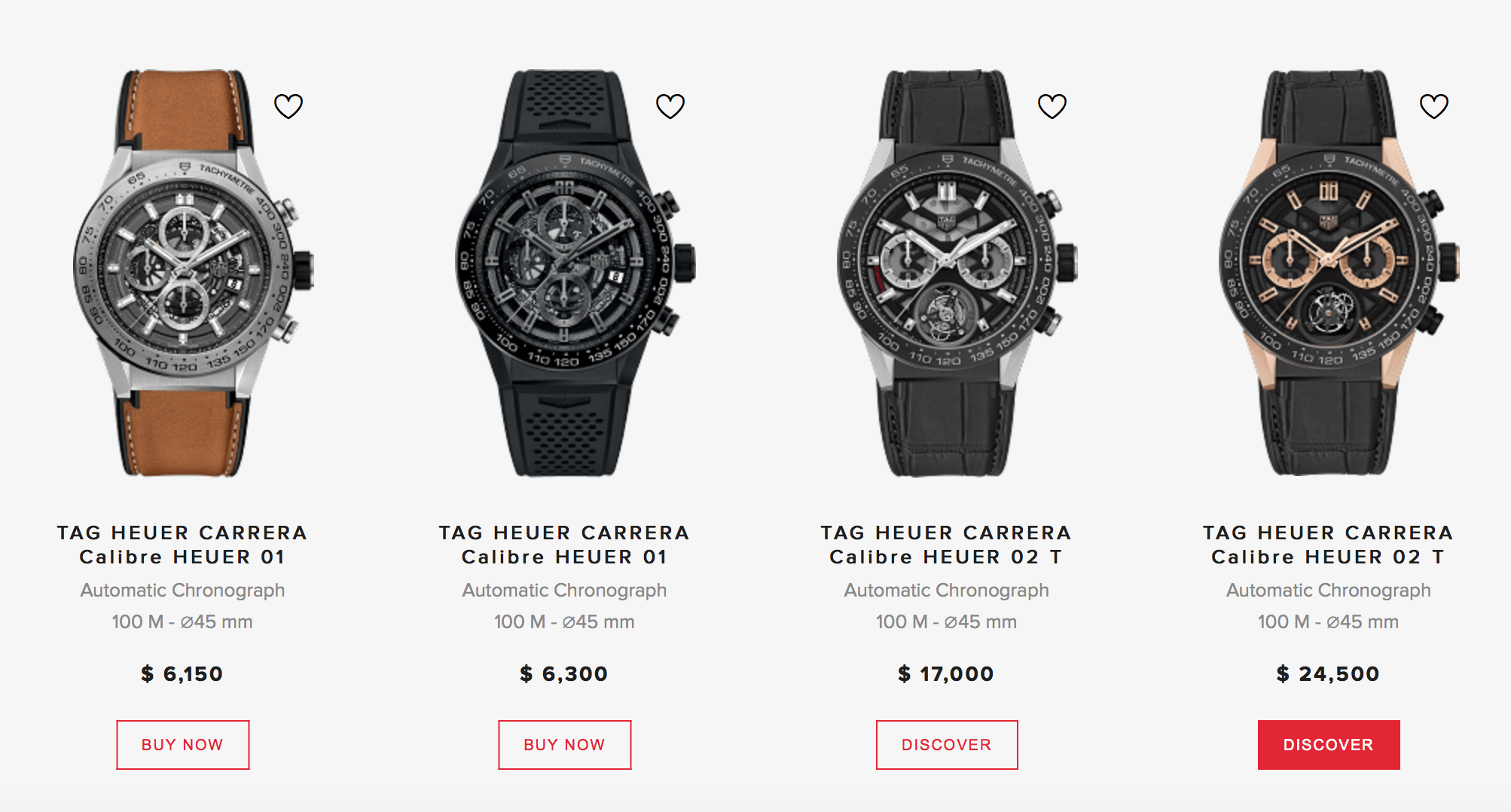 image: 24 Sèvres
image: 24 Sèvres
“We didn’t realize the speed at which millennials would take to buying cars or watches online.” This is what Jean-Claude Biver, head of LVMH’s watch business, told Reuters at the Baselworld watch fair last week. The Paris-based luxury goods conglomerate is one of the latest to join the online push that is “sweeping the luxury goods world, where web sales are already major growth drivers for fashion labels,” despite years of steadfast resistance.
LVMH has not, despite the wide range of brands under its umbrella, necessarily tested to see just how much money consumers are willing to spend online. While its most valuable brand, its marquee Louis Vuitton, offers a variety of its goods online, including a selection of runway garments and bags, the vast majority of items either must be purchased over the phone or in-store, even if they are featured on the brand’s website.
Its Céline brand, which regularly boasts garments and bags with price tags that in no small number of cases top those that bear a Louis Vuitton label, only very recently began offering its wares by way of e-commerce on LVMH’s 24 Sèvres site thanks to a small capsule collection; the very notoriously digitally averse Céline’s own U.S. site is expected to introduce e-commerce capabilities in the near future.
Meanwhile, Givenchy launched e-commerce in several regions across Europe early this year (North America is not expected to roll out until mid-2018 and Asian markets in 2019), and Loewe, Marc Jacobs, and to an extent, Emilio Pucci, all of which are owned by LVMH, offer their wares for sale online.
But most of these brands offerings are small change compared to those of Loro Piana – which has, for some time, enabled consumers to purchase $30,000 mink coats and $5,625 cashmere jackets on its website – and Tag Heuer. The Swiss-based watch brand offers an array of $1,000+ to $12,400 watches for purchase online, but does have some limits in place. Its more expensive options, for instance, including its $24,000+ models are “discover”-able online and available in store.

Despite the fact that high-end watchmakers have “long [been] skeptical that customers would pay thousands to buy intricate timepieces on the web, [at least some have decided] to step up their investments in e-commerce,” per Reuters.
Given that Tag Heuer is looking to expand upon its existing network of e-commerce sites – which are accessible to consumers in five countries including the United States and Britain – over the next 18 months and given the potential of 24 Sèvres (which follows from an earlier, albeit unsuccessful LVMH e-commerce venture eLuxury.com that made its debut in 2000 and closed up shop in 2009), it seems as though LVMH is ready to see just how much consumers are willing to e-spend.
There is certainly evidence that consumers are spending in significant ways online. New York-based e-commerce site, Moda Operandi, for example – which offers runway garments and high-end jewelry and accessories – has consumers spending thousands of dollars per transaction on garments and accessories that in the past they would only buy in-store. Moda Operandi’s Chief executive officer Deborah Nicodemus emphasized last year that Moda Operandi’s customers are “not just browsing” its $6,000 dresses and $32,890 pendants; they are buying.
Meanwhile, Hermès is currently offering big-ticket items for sale online, such as its medium Pliplat clutch, which sells for $49,400, and its small Double Sens 36 tote bag, which will set you back $30,400, among other pricey bags. Watchmaker Vacheron Constatin company announced last year that would partner with New York-based website Hodinkee to sell its $45,000 Cornes de Vache 1955 timepieces exclusively online.
That does not mean, however, that Louis Vuitton is willing to make its full expanse of products available to consumers by way of a single click or that LVMH’s Hublot and Zenith watch brands will follow suit … yet.











